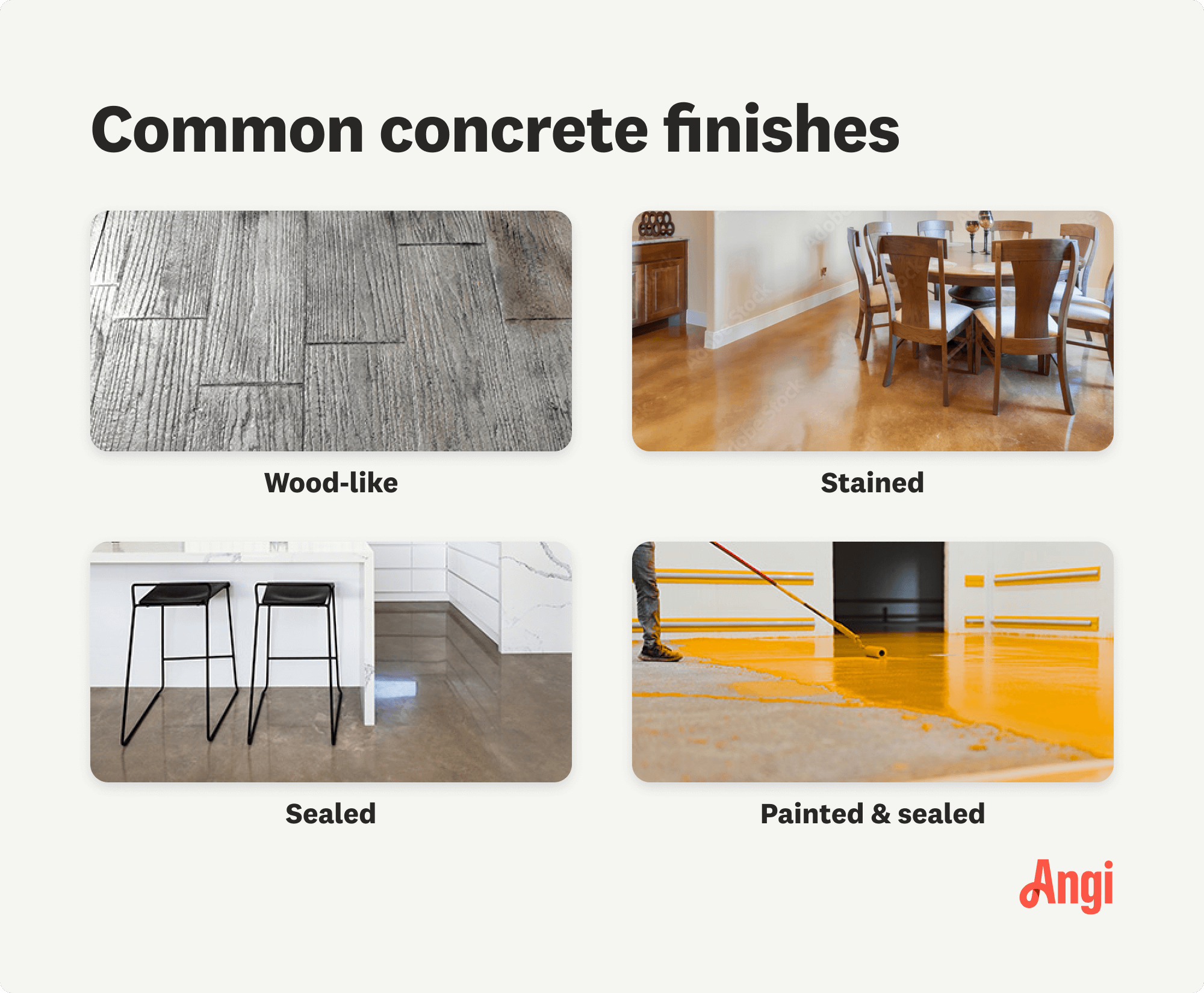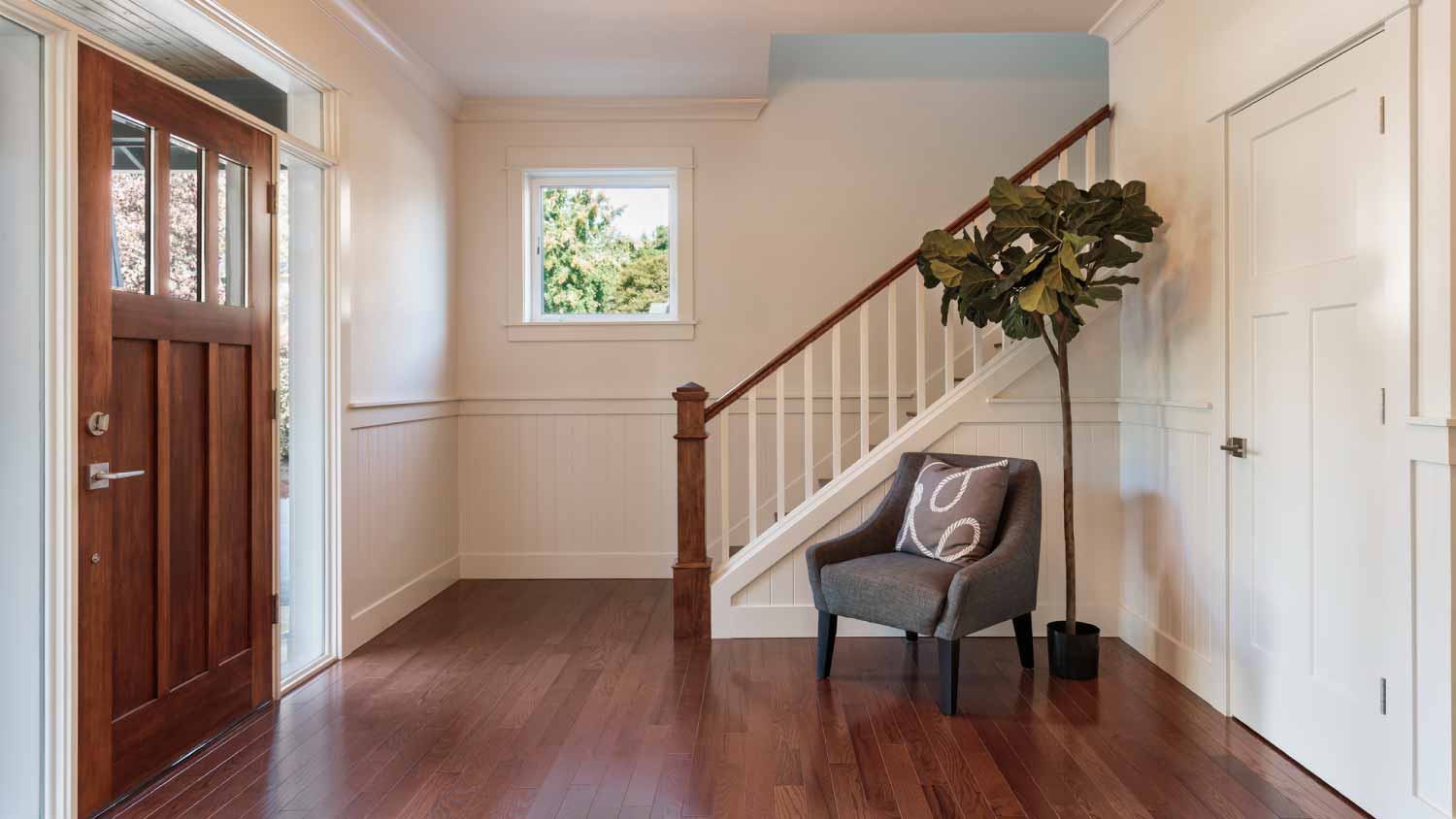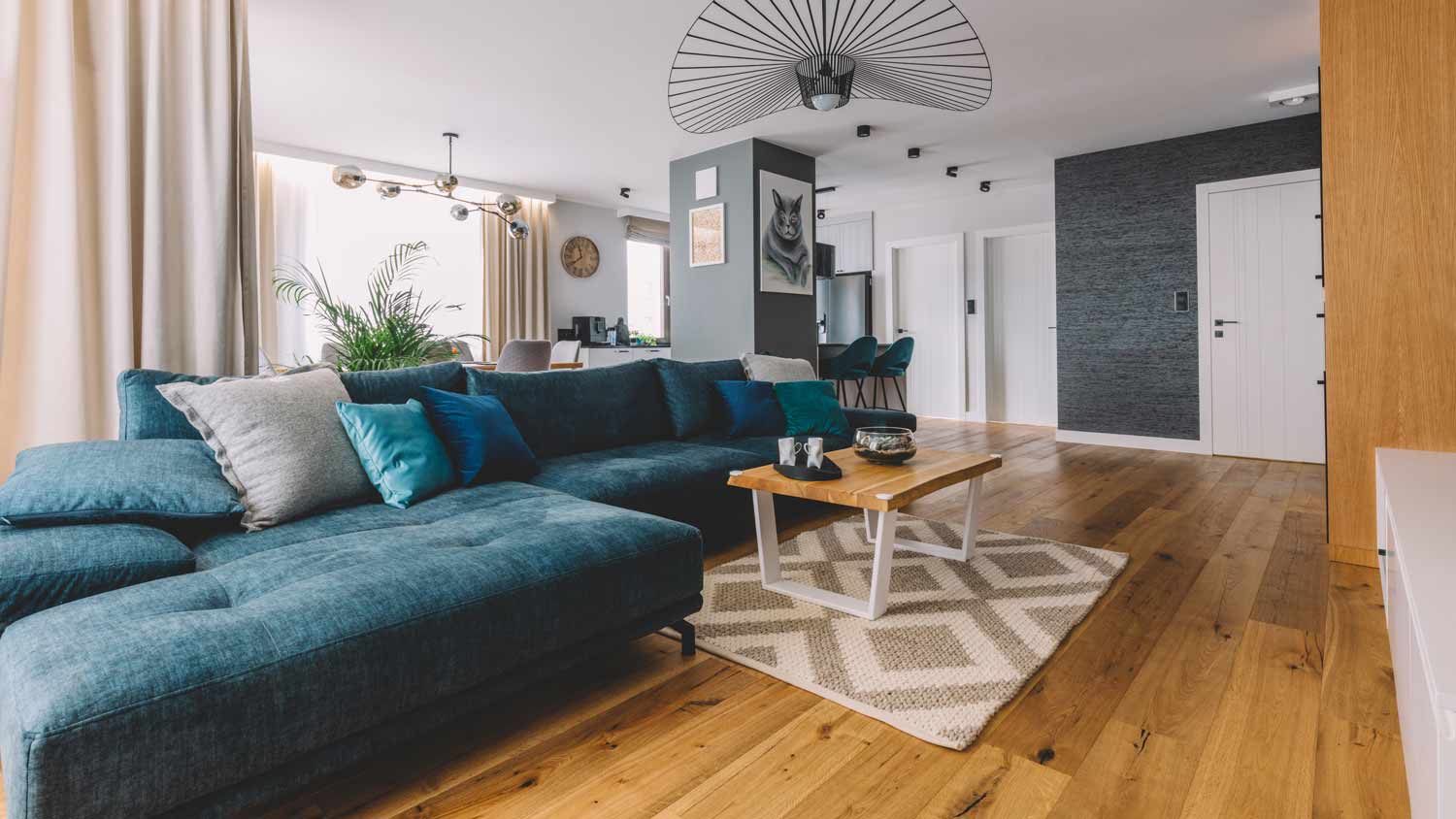How Much Does Polished Concrete Flooring Cost? [2025 Data]
Concrete floors cost an average of $4,500, but prices often range from $1,000 to $8,000. A pro will determine the final cost based on the square footage of the floors, type of finish, and concrete grade.


If you pride yourself on your modern or industrialist aesthetic, chances are you’ve considered using concrete to your advantage in your interior design scheme. But have you given much thought to your floors? Concrete flooring costs $4,500 on average, but prices can range from as little as $400 to an expensive $32,000. Bigger, more complex projects will be on the higher end of the price range, whereas smaller projects will be more kind to your wallet. Explore what factors go into the cost of concrete flooring.
Polished Concrete Floor Cost Factors

When you hire a local concrete flooring specialist, they'll estimate the cost of polished concrete floors on a few common factors. The process consists of removing the rough top layer of the concrete to reveal a smooth finish, adding a layer—or layers—of stain, and, in some cases, incorporating stenciling and stamping for a unique design.
Size
Most polished concrete floor jobs cost $2 to $16 per square foot, depending on the intricacy of the stain, the polishing technique, and the overall size of the room and project. Polishing concrete floors in multiple rooms will take more time and thus cost more.
| Square Footage | Average Cost |
|---|---|
| 200 | $400–$3,200 |
| 500 | $1,000–$8,000 |
| 1,000 | $2,000–$16,000 |
| 2,000 | $4,000–$32,000 |
Concrete Finish Type

Most finished concrete floors cost $2 to $8 per square foot, but certain complex designs might cost up to $10 per square foot.
| Concrete Finish Type | Average Cost per Square Foot |
|---|---|
| Wood-Look Concrete | $3–6 |
| Stained Concrete | $2–$10 |
| Sealed Concrete | $0.85–$1.60 |
| Painted and Sealed Concrete | $1.50–$3 |
Concrete Grade
Grade level refers to a room’s relation to the ground level of your home. If a polished concrete floor is being installed on or above grade, meaning at ground level or above, then a cement underlayment will need to be installed. This can add $2 to $3 per square foot to the total cost.
Intricacy of Design
Your costs will also increase if you choose a more complex color or design for your floors, such as custom concrete floor finishes. Here’s what to expect for certain levels of complexity:
| Design Needs | Average Cost per Square Foot |
|---|---|
| Simple (single layer, basic design) | $2–$6 |
| Moderate (scoring, multiple colors) | $5–$8 |
| Advanced (advanced colors, faux finishes, patterns) | $8–$15 |
New Concrete Slab vs. Replacement
Installing a new concrete slab costs an average of $6 per square foot, or between $4 and $8, depending on whether it's precast or poured on site. If you have an existing concrete floor, extreme damage may require resourcing or replacement. Concrete resurfacing costs $3 to $5 per square foot and only requires adding a fresh, smooth layer to the top.
In extreme cases, you may also need to remove the original concrete and start over. In addition to the new installation cost, you'll pay between $2 and $6 per square foot for concrete removal costs.
Surface Repair to Existing Damage
If you’re refinishing an existing concrete surface, the condition of that concrete needs to be assessed for damage, such as cracks. Most surface repairs for concrete involve sealing damaged areas and repairing concrete cracks, which can cost about $2 per square foot. If the concrete needs to be fully resurfaced, this can cost an additional $2 to $3 per square foot.
Complexity of Grinding
Grinding is the technique used to polish concrete, and the number of times you grind a concrete floor determines its level of shine and sparkle. Each additional grind will add $3 to $5 per square foot to your project costs. If you desire a higher level of shine, your contractor may need to grind your concrete floor multiple times, requiring a more complex grinding process with a higher cost.
Junk Removal
If you replace your concrete floors or rip off a previous layer before starting, the construction debris must go somewhere. Construction junk removal costs an average of $800, though some contractors will include this in their flat fee. If you take the job on yourself, always research how to dispose of concrete properly in your area.
Materials
Your construction team will work the cost of the required tools and materials into the total cost of polishing concrete floors. Your contractor will use floor grinders in a range of sizes and different grades of heads to achieve the look you desire. You will also pay for the cost of staining your concrete floors. In this case, the materials cost about $60 per gallon of stain.
Labor
The vast majority of the cost of polishing concrete floors goes to labor.
Professionals pay to maintain their equipment and add stain to your floor, but you're truly paying for the skilled labor of your team. Assume that two-thirds or more of the $2 to $16 per square foot accounts for labor costs. Labor costs will increase due to:
Specialty designs
Additional coats of stain and seal
The shape and size of the room
Rush jobs and the time of year
The demand for contractors in your area
Prep
Remember that you may need to remove the old flooring (like carpet or vinyl) to reveal the concrete floor underneath. The cost of removing flooring depends on the type of material. For example, removing tile costs between $2 and $7 per square foot, while ripping up carpet costs just $1 to $5 per square foot.
The only other prep required to polish concrete floors is clearing out the room and ensuring proper ventilation during the process. Most contractors will request that you move and cover everything in the room, though you can also consider hiring local movers for $25 to $50 an hour to relocate your furniture for the day.
Location
Since labor accounts for a considerable chunk of the cost of polishing concrete floors, the price will depend on where you live. The cost of living and related contractor rates will vary based on whether you live in a city or a more rural area, your proximity to your floor specialist, and the availability of tools and supplies where you live.
DIY vs. Hiring a Pro

We don’t recommend polishing or finishing a concrete floor yourself. Grinding concrete to the correct level is a very complex and time-intensive job. It becomes even more complicated if you’re doing the job on or above the ground level of your home, which can often involve installing new concrete.
Your local concrete flooring professional will best know how to create the design you want and leave you with the clean, shining surfaces you’re envisioning. Get an estimate in advance to ensure that the job you want is within your budget.
How to Save Money on the Cost of Polished Concrete Floors
While laying concrete floors and grinding them for that polished look is not a DIY job, other parts of the process may be. For example, you can learn how to seal concrete floors yourself and spend just $0.10 to $0.75 per square foot or how to finish concrete yourself from start to finish.
You can also save money on the process by:
Meeting with at least three contractors to compare estimates.
Avoid replacing the concrete by resurfacing it first instead.
Handling all floor removal and junk removal yourself.
Work within a flexible time frame to avoid rush jobs or material delays.
Weigh the cost of a polished concrete floor against other options, such as epoxy flooring.
Avoid higher floors in your home and custom concrete designs.
How Angi Gets Its Cost Data
Home is the most important place on earth, which is why Angi has helped more than 150 million homeowners transform their houses into homes they adore. To help homeowners with their next project, Angi provides readers with the most accurate cost data and upholds strict editorial standards. We extensively research project costs to develop the pricing data you see, so you can make the best decisions for you and your home. We rely on reputable sources, including the U.S. Bureau of Labor Statistics, academic journals, market studies, and interviews with industry experts—all to ensure our prices reflect real-world projects.
Want to help us improve our cost data? Send us a recent project quote to costquotes@angi.com. Quotes and personal information will not be shared publicly.
Frequently Asked Questions
Epoxy is better than polished concrete as it provides better longevity, safety, and toughness than polished concrete. However, it does cost more, and the end results look similar. If budget is your top priority, polished concrete might be the way to go.
If properly installed and maintained, polished concrete floors can last up to 20 years or longer. Concrete can be a difficult material to handle, requiring expert knowledge in mixing and application. Make sure you’re working with a licensed masonry contractor and that you’re investing in an annual deep cleaning to maintain its life span.
If it's well maintained, a polished concrete floor can add value to your home. Concrete is a low-maintenance and durable material that can appeal to homebuyers.
.jpg?impolicy=leadImage)














